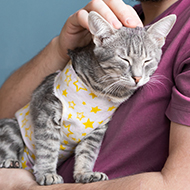.jpg)
"It is really exciting to have more larvae pupating than ever before" - Dr Helen Taylor.
Keepers at RZSS Highland Wildlife Park are gearing up for what could be a record-breaking breeding season for a rare insect breeding programme.
The Pine Hoverfly Conservation Breeding Programme is responsible for most of Britain’s known population of the critically endangered species, currently only found in a small forest in the Cairngorms.
More than 150 pine hoverfly hatched at the park in 2020, with almost all now entering the next stage of their life cycle by becoming pupae. Among them include ‘Larva Croft’ and ‘Pine-al Ritchie’, named by fans of the project funder, Marvelous Europe.
“Every individual matters, so it is really exciting to have more larvae pupating than ever before and nerve-wracking to have to wait and see how many complete the full cycle, from egg, to larva, to pupa, to adult, ”commented Dr Helen Taylor, conservation programme manager at RZSS.
“The process they go through is extraordinary. Inside the pupa case, these animals are breaking most of their body down into goo and then totally reassembling it to transition from a larva to an adult fly. Most people will be familiar with this idea from caterpillars turning into butterflies, but it really is a magical transformation.”
The pine hoverfly is one of Europe’s rarest species, with the last sighting of an adult in the wild being more than eight years ago. In previous breeding cycles at the park, the most pine hoverfly larvae that pupated was 13.
Launched in 2016, the RZSS Pine Hoverfly Conservation Breeding Programme runs in collaboration with the Rare Invertebrates in the Cairngorms project, a partnership between the RSPB, Cairngorms National Park Authority, Buglife Scotland, Butterfly Conservation Scotland, and NatureScot.
In the weeks ahead, keepers at Highland Wildlife Park hope to move the pupae into a brand-new purpose-built breeding centre.



 RCVS Knowledge has called on vet practices to audit their post-operative neutering outcomes.
RCVS Knowledge has called on vet practices to audit their post-operative neutering outcomes.